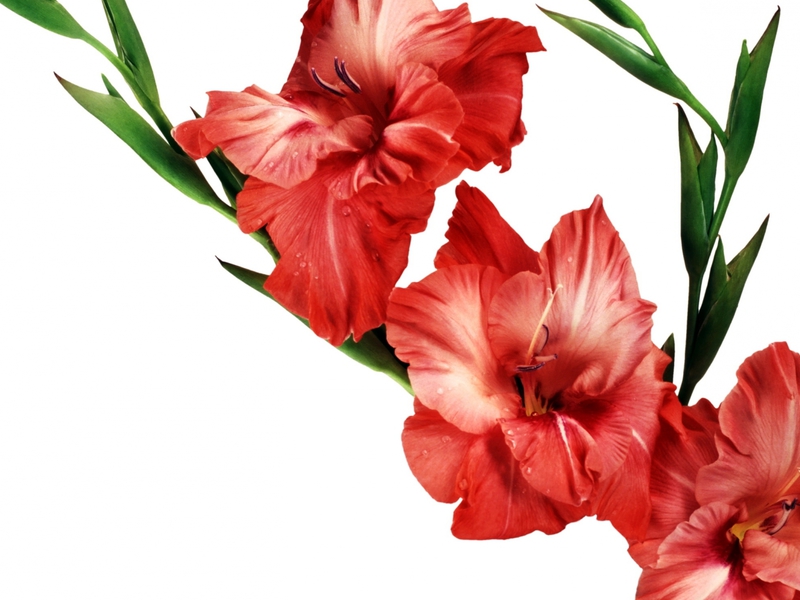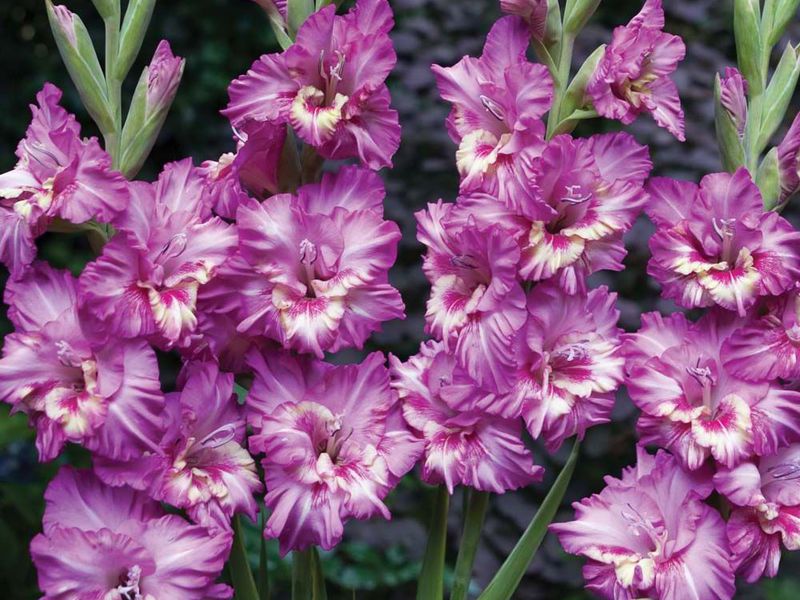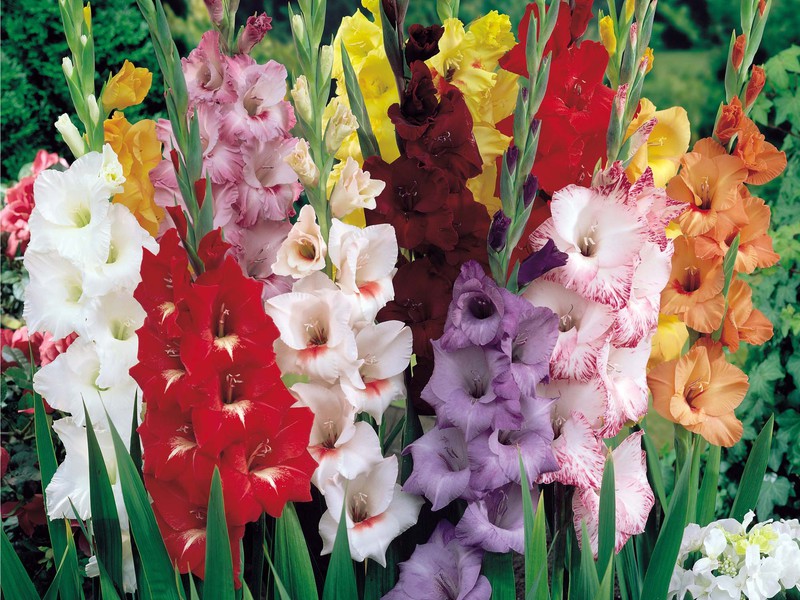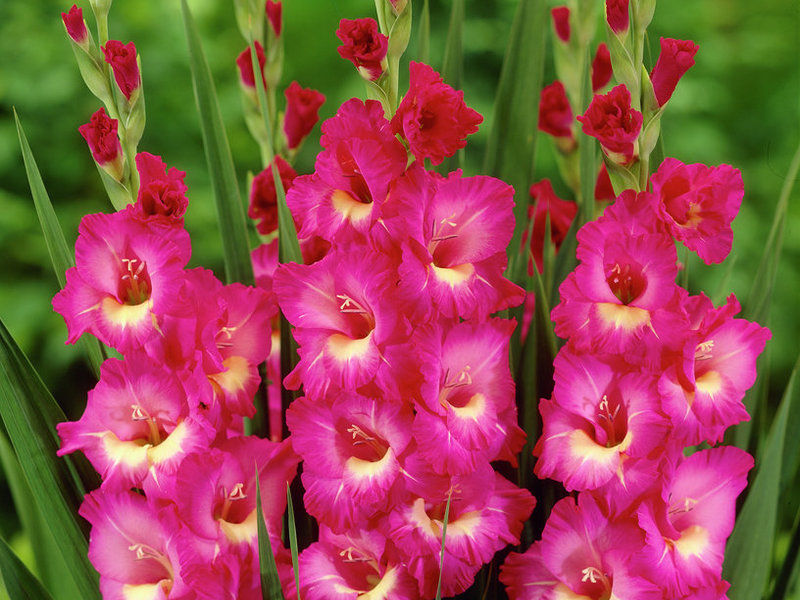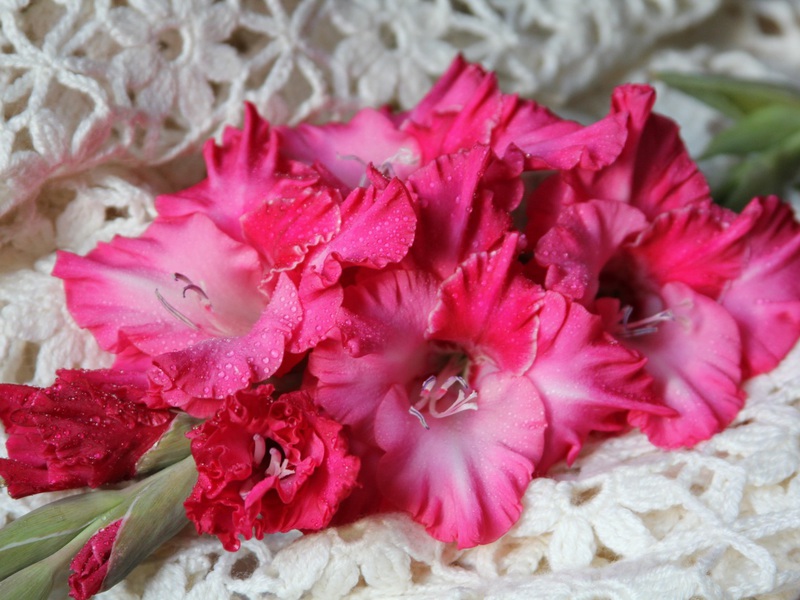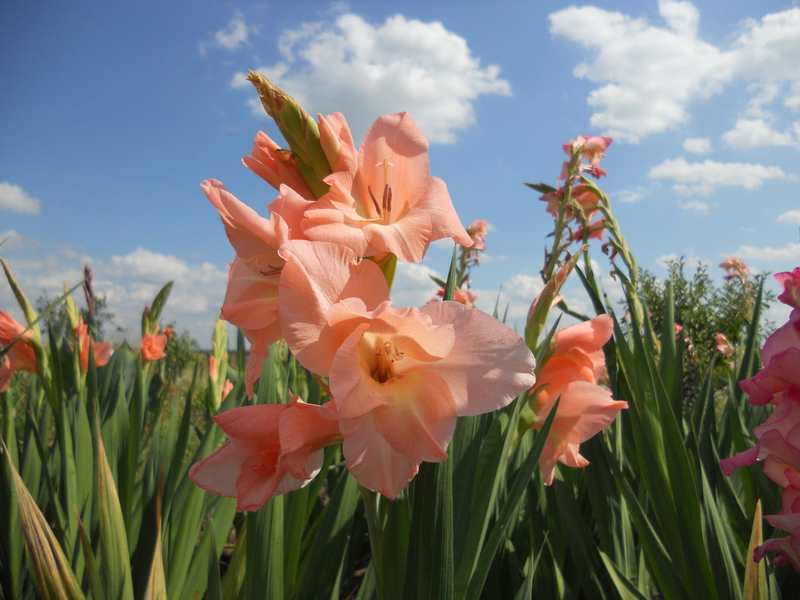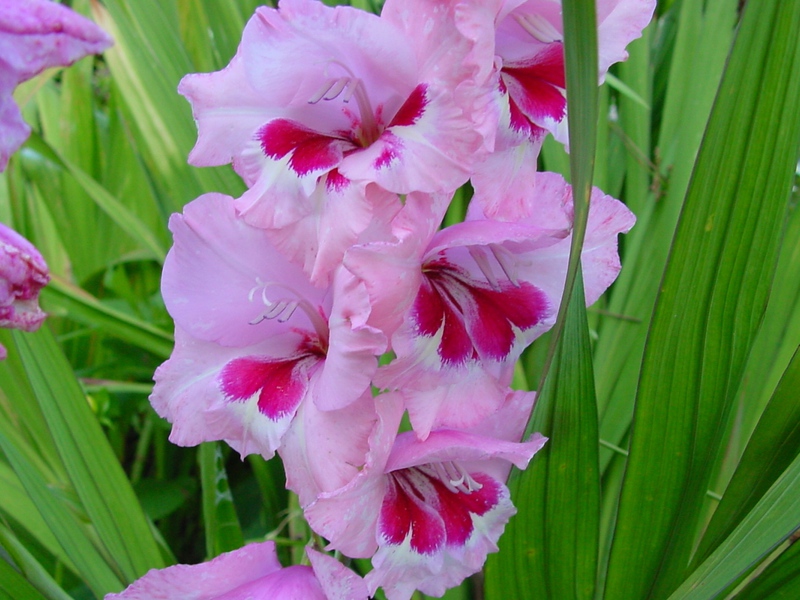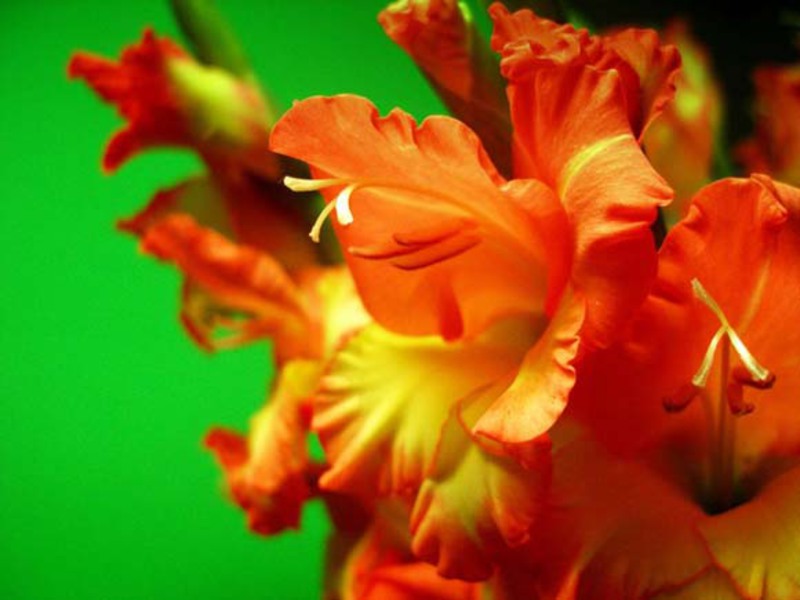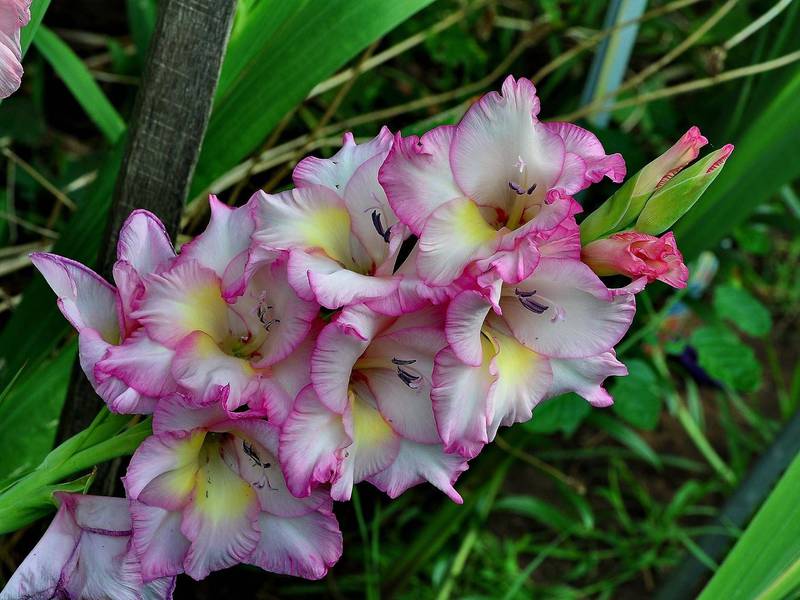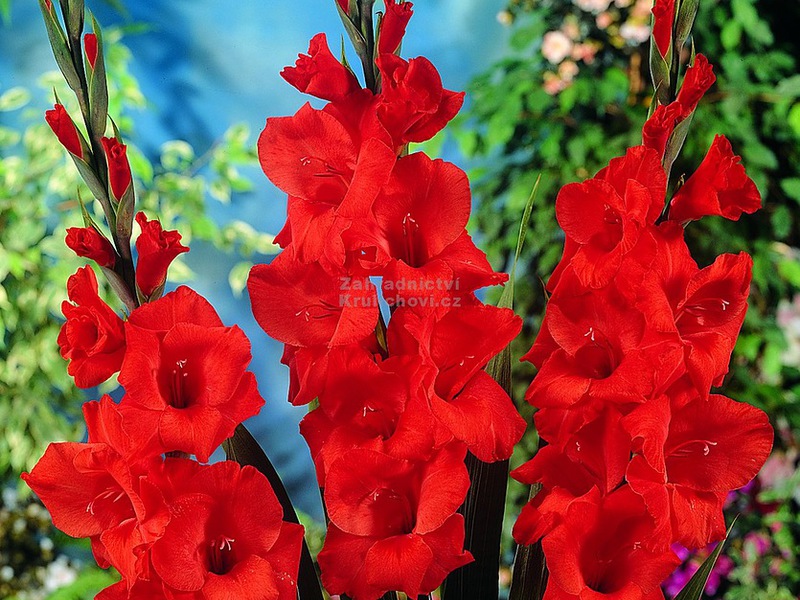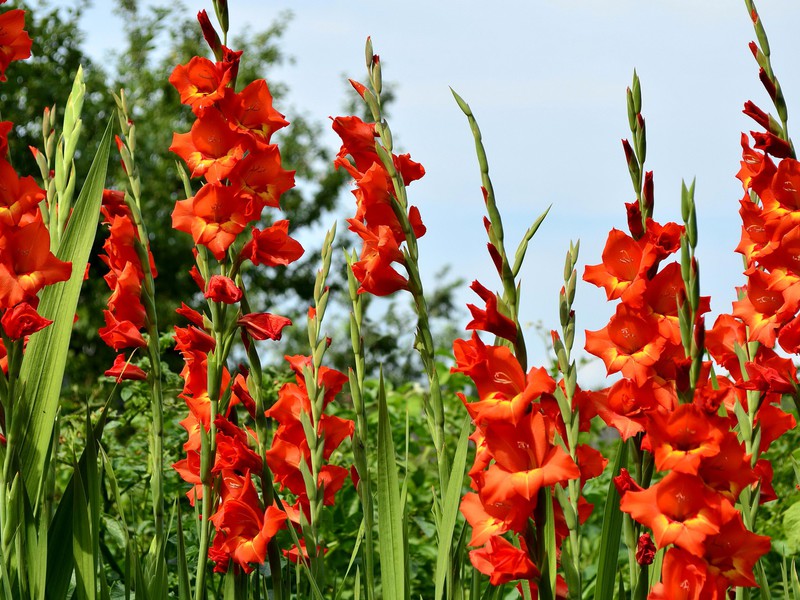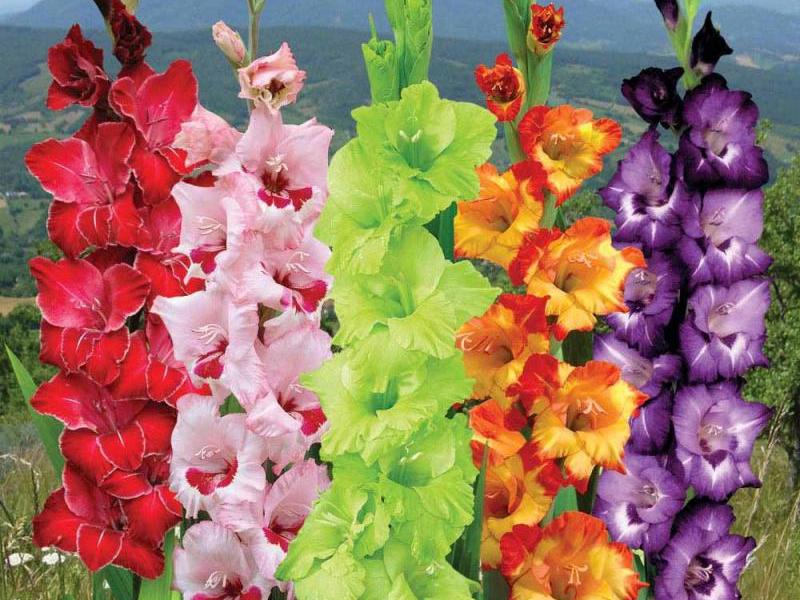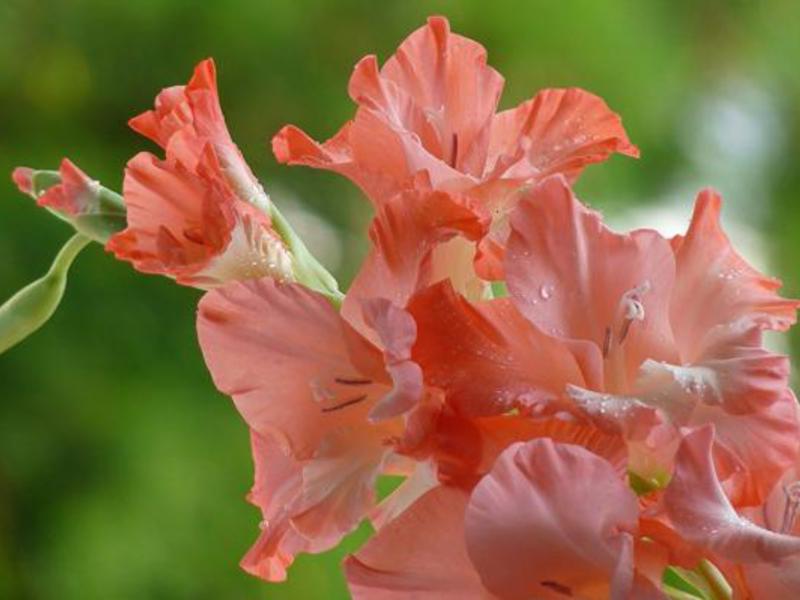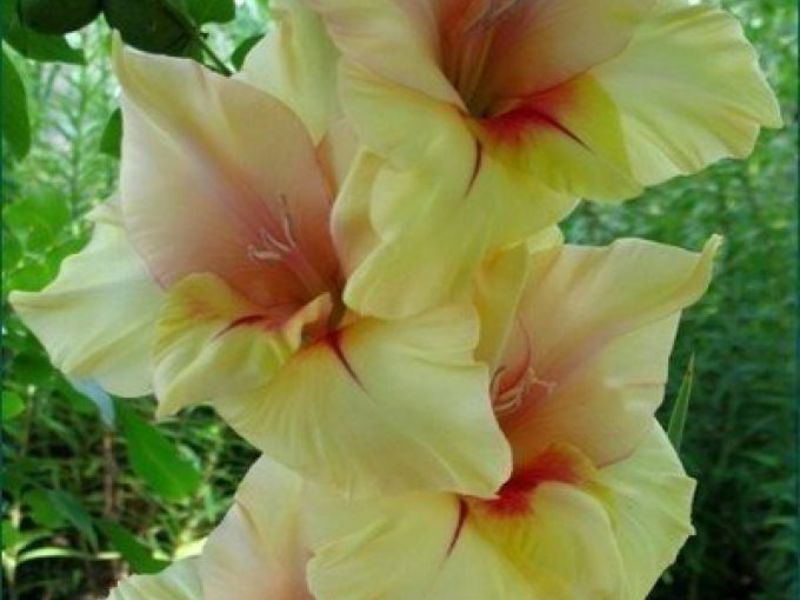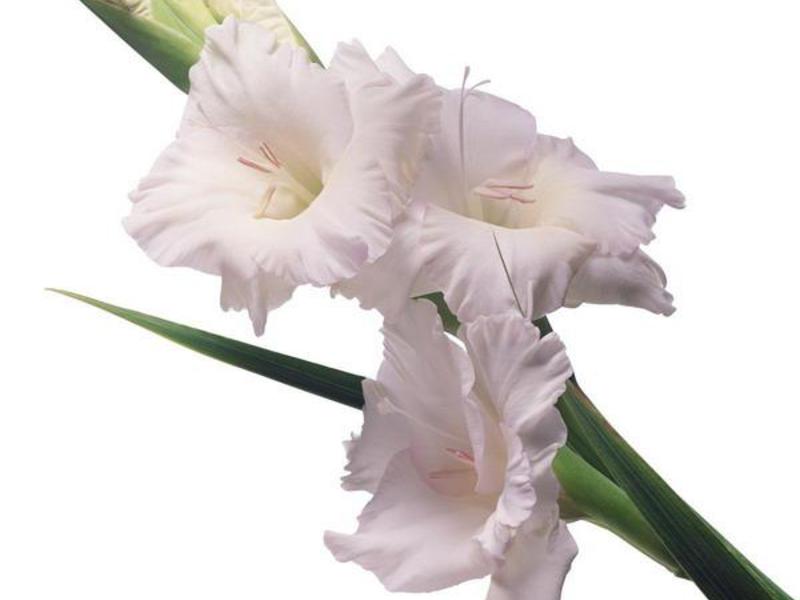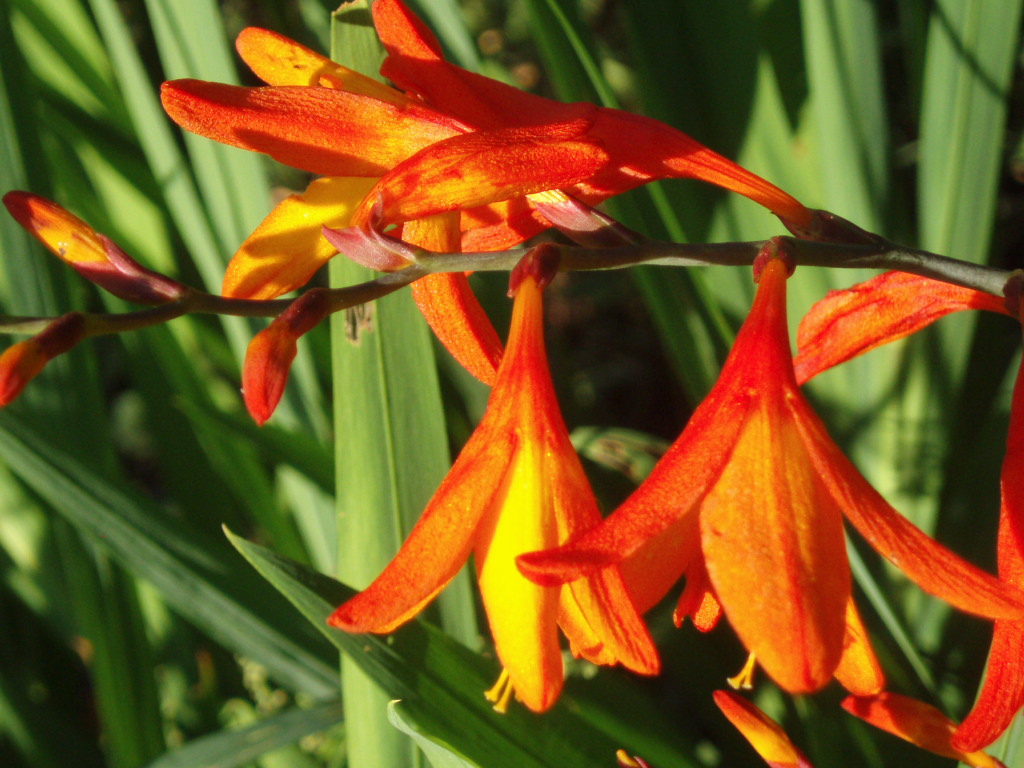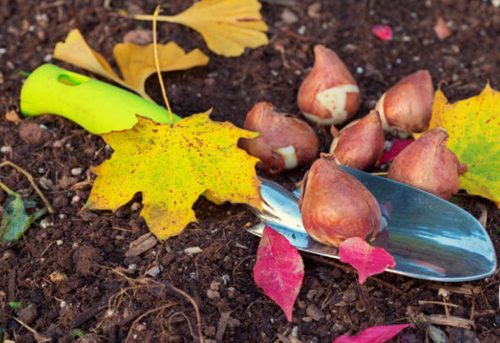The first mention of this flower dates back to the first century BC. Then gladiolus was considered a magical plant that helped to save warriors from death. But already in the Middle Ages, gladiolus was added to the dough, making flour from it, and bread was baked.
Description of gladioli
In ancient Rome, there is a legend that says where the gladiolus flower came from. According to this legend, two friends were taken prisoner, turned into gladiators... And for the sake of freedom, they were forced to fight. Freedom was promised to the winner of this battle. Friends refused, as a result of which both were sentenced to death. At the moment their bodies touched the ground, beautiful and tall flowers, called gladioli, appeared from the hilts of the swords.
Therefore, in floristry, gladiolus denotes friendship and memory, nobility and loyalty. From Latin the name of the flower sounds like "a sharp sword". And because of the shape of their leaves, similar to swords, they have a second name - it is a sword. The flower belongs to the iris family and in nature there are about 200 wild-growing species. Photo of gladiolus flowers.
Gladiolus buds a little curved and funnel-like... All flowers on it are collected on one side, sometimes on two. Gladioli are divided into two groups. It:
- Large-flowered;
- Small-flowered;
- Mid-flowered.
The homeland of the flower is Asia and Europe, the subtropical and tropical regions of Africa, Western Siberia and the Mediterranean. In total there are about 5000 species of this plant... On the territory of Russia you can find such varieties as:
- Dana;
- Prague;
- Pink pearl;
- Ostrich feather;
- Michurinets;
- Other.
Some of their varieties can bloom by early May if they are planted in pots at home. An important feature is that they can adapt to a wide variety of soil types and climates. Picture of gladioli.
The stem of the plant is vertical, single and without branches. Reaches in height from 50 cm to 80 cm... The bud has six unequal lobes that grow together at the base and are funnel-shaped. They can be collected in unilateral, bilateral or spiral inflorescences. This inflorescence can be dense or medium-dense and reach a length of 80 cm.
Gladiolus can have a wide variety of flower colors. It can be red, pink, white, purple, as well as varieties with yellow, blue, blue and other flowers. Gladiolus flowers photo.
Preparing the bulbs for planting
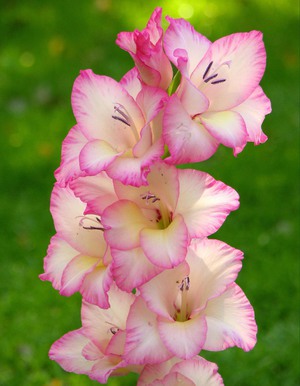 It is necessary to start preparing the bulbs for planting 15-20 days before. They are cleaned of scales and carefully inspected; the bulbs should not be damaged from pests and traces of the disease. A healthy bulb is dense and has a shiny surface, the rudiments of roots and kidneys are already visible on it. Those bulbs that are damaged by ulcers, moldy or dried out should be thrown away.
It is necessary to start preparing the bulbs for planting 15-20 days before. They are cleaned of scales and carefully inspected; the bulbs should not be damaged from pests and traces of the disease. A healthy bulb is dense and has a shiny surface, the rudiments of roots and kidneys are already visible on it. Those bulbs that are damaged by ulcers, moldy or dried out should be thrown away.
Bulbs that have shiny dark brown spots of scab or fusarium can be treated. For this, the place of defeat is carefully cut out and covered with brilliant green. Before planting the bulb, the place should be tightened.
The bulbs are planted buds up, in two rows. The landing site should be light and warm, but protected from sunlight. The bulbs should not be moistened, it is can accelerate root growth, which can be damaged during planting and then the growth of the plant will be delayed. A properly prepared bulb gives 1 mm root tubercles before planting, and the sprout size is from 1 to 10 cm. Bulbs, on which no shoots and tubercles have appeared, can be thrown away.
Already before planting the corms, it is recommended to treat it with a solution of foundationol or potassium permanganate, about 30 minutes.
Landing gladiolus
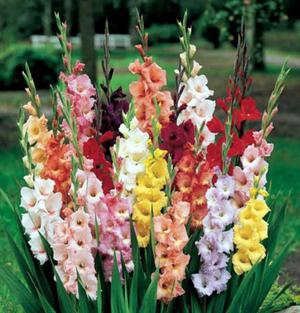 First you need to prepare the place where the flower will grow. As mentioned above, the location should be fairly sunny and protected from strong winds. Low areas with water should be avoided. The best soil is moisture-absorbing, loose and free-flowing.
First you need to prepare the place where the flower will grow. As mentioned above, the location should be fairly sunny and protected from strong winds. Low areas with water should be avoided. The best soil is moisture-absorbing, loose and free-flowing.
Gladioli, although they can tolerate cold weather, it is better to plant them in enough heated soil at 8-10 degrees, 10 cm deep. In the middle lane, the best time for planting falls around April 20. The earth will need to be dug up in advance and overripe compost added to it, fresh manure can destroy the flower. You can replace the compost with mineral fertilizers, which will need to be added throughout the season.
Large bulbs are deepened by 15 cm, medium ones are planted by 7-9 cm, but small flower babies are placed in the ground to a depth of no more than 5 cm. Large ones can be deepened by 20 cm if the soil begins to settle during watering. A layer of sand of 2 cm should be added to the bottom of the hole. Wood ash is sprinkled on the bulb itself, more sand and watered with a warm solution of potassium permanganate, and then covered with earth.
It is not necessary to use sand when planting, but it is worth remembering that it protects the bulb from possible diseases and improves the composition of heavy soil. But in the fall, thanks to the sand, the bulb with its children can be easily pulled out of the ground.
The size between the bulbs when planting depends on their size. Between the large ones, 10-15 cm are allowed, between the medium ones no more than 10 cm, but between the small ones from 3 to 7 cm.The distance between the first and second row should be 20-25 cm.
